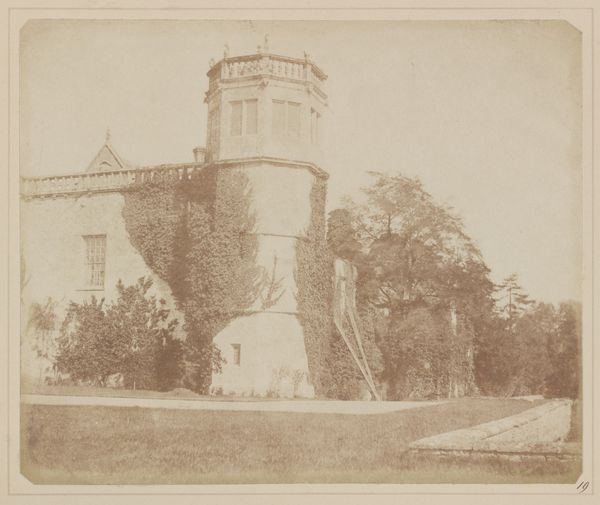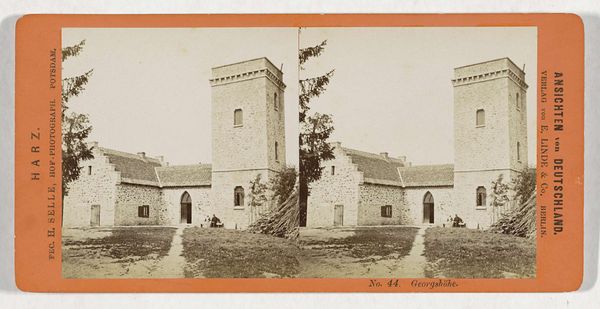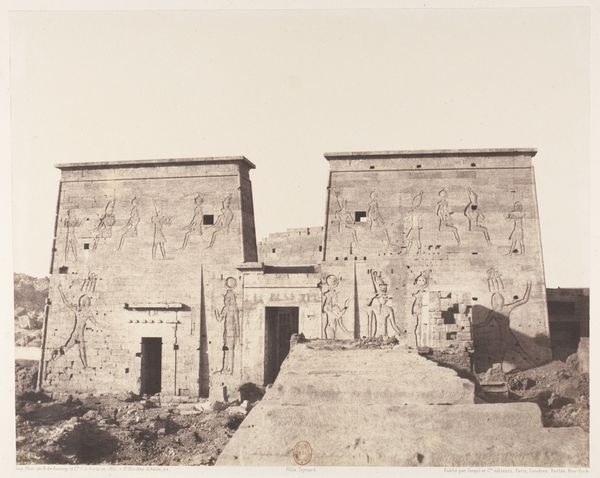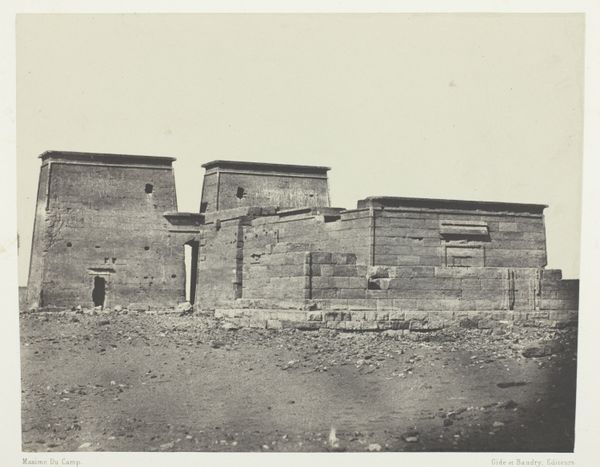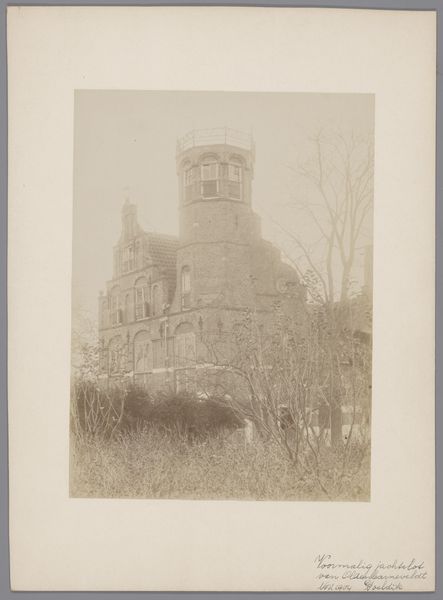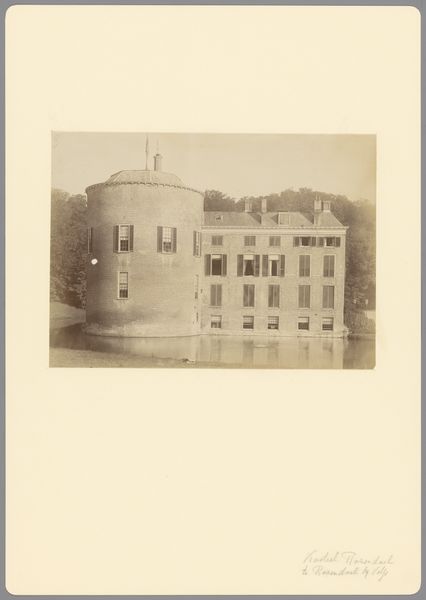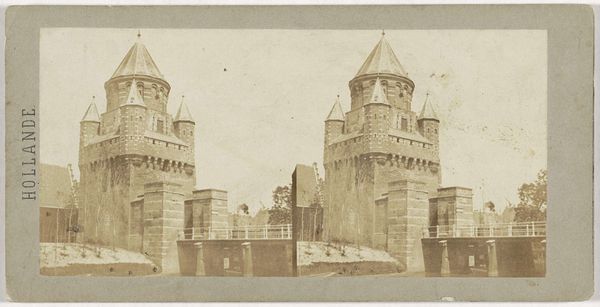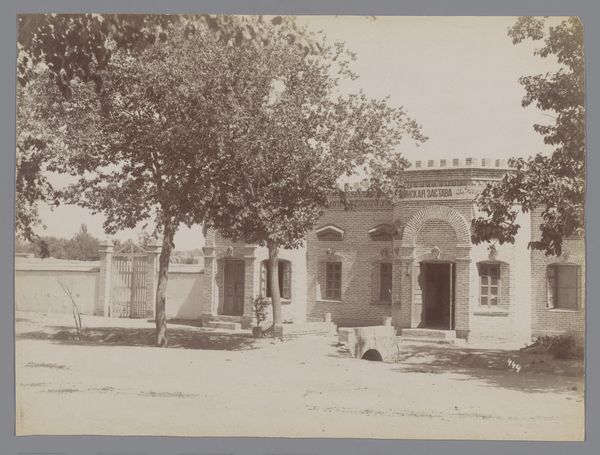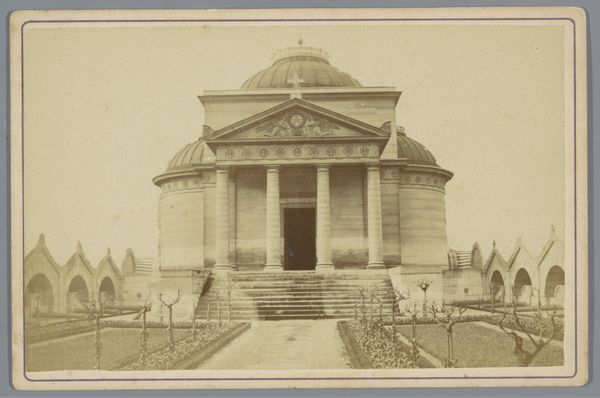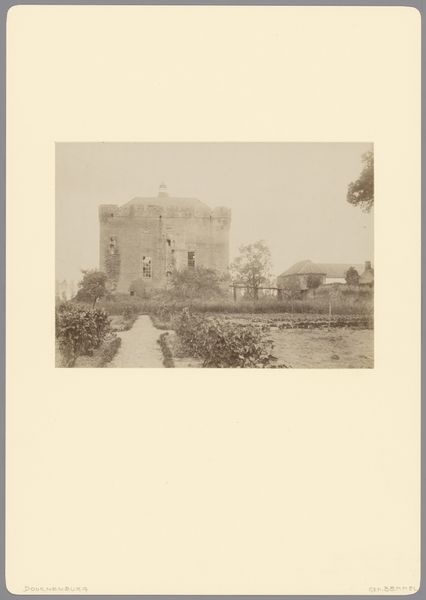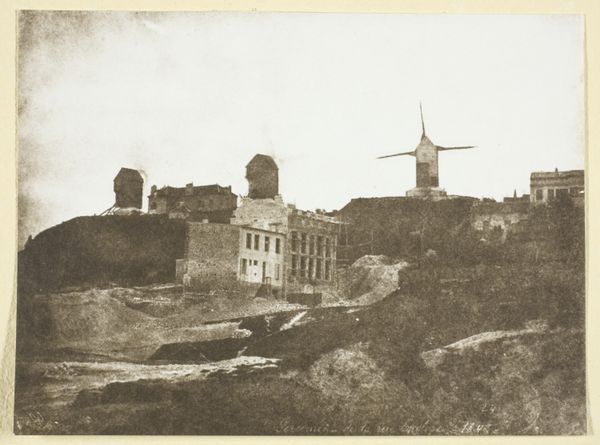
photography, albumen-print, architecture
#
pictorialism
#
photography
#
cityscape
#
albumen-print
#
architecture
#
realism
Dimensions: 5.4 × 8.8 cm (image); 6.1 × 10 cm (card)
Copyright: Public Domain
Curator: This is an albumen print simply titled "Woods Cabinet," by J. L. Lovell, its date is unknown. What strikes you most when you first see it? Editor: Immediately, there’s a sense of permanence, almost solemnity. The stone architecture and restrained palette lend it gravitas. I am curious, though. What secrets does this structure hold? It also speaks about stability and tradition, it feels secure, but I guess that’s buildings in general. Curator: I see how you get there. Looking at its form and material—stone and the tower, yes, it speaks to enduring power. Architecturally speaking, the building suggests, the combination of realism with picturesque aspiration embodies late 19th-century aesthetics and also suggests that human-made spaces carry on the symbolic essence of memory. Editor: Memory… that’s spot on. It’s a beautiful tension. I also notice the landscape; everything seems calculated, including the architecture and even the slightly gloomy lighting, creating a layered visual experience. It suggests both scientific study and aesthetic contemplation. What more do you observe about this particular photograph? Curator: Well, in many ways, Lovell is using albumen-print as a means of recording a specific, material reality while embedding it within an evocative aesthetic experience. It invites viewers to examine a singular moment of historical significance by turning mundane details of a time period into an artifact capable of reflecting much larger issues regarding legacy, tradition and community. Editor: You have said "Legacy", well I keep thinking about my legacy. How will the planet remember my time on this small planet? Perhaps it’s just as important to learn how to disappear. And what an odd paradox: stone as legacy, a camera captures all, the building standing to observe what used to be, but now no longer will exist, as a monument. Curator: I hadn’t considered the "disappearing" element, the structure being a constant and witness to change, both holding and resisting that transience, an eternal witness... an odd sense of stillness and change that plays beautifully within it. Thanks for helping me discover these insights. Editor: Absolutely, my pleasure. I guess what resonates for me is that there is so much you could pour out on the canvas. And for our listeners, sometimes things aren't as complex as they seem at first glance. It all boils down to finding your own unique link.
Comments
No comments
Be the first to comment and join the conversation on the ultimate creative platform.
